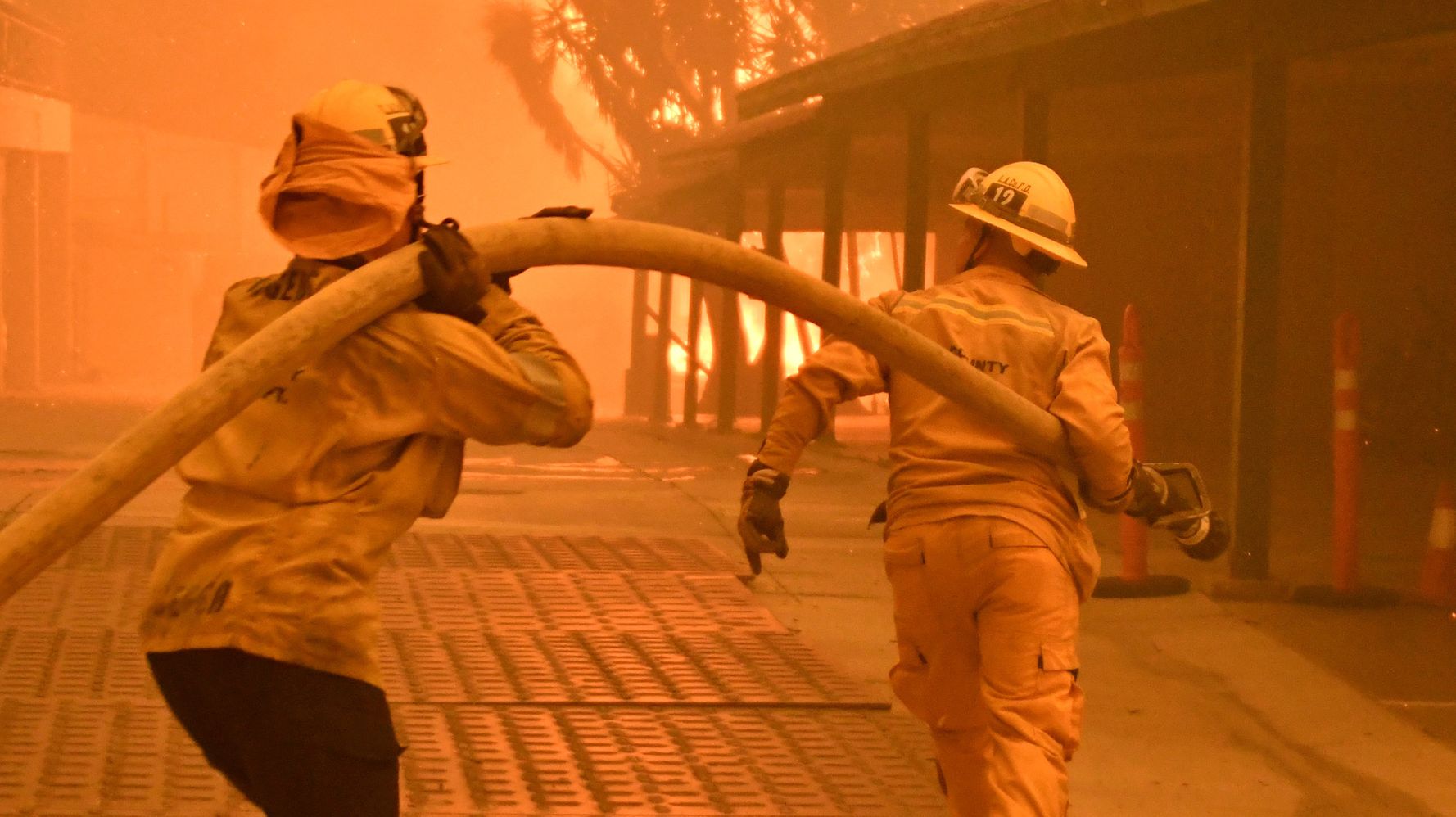[ad_1]
Saturday morning, as entire California towns were engulfed in flames, the president retreated to Twitter. He did not offer help, condolences or even prayers for those killed ― the toll is now at least 63 ― in the deadliest fire in the state’s history. Instead, he offered an explanation for the wildfires ― California’s “poor forest management†― and threatened to withhold federal recovery funds.
Poor forest management is a nod to logging interests and, for reasons others have pointed out, is not the root cause of California’s year-round wildfire problem.
President Donald Trump’s comment isn’t just factually inaccurate. It signals a larger problem that should be of major concern to those of us who want to prevent future disasters like this one.
Incorrectly placing blame on “poor forest management†keeps the American public from understanding the actual cause of the wildfires. This matters, because if we don’t understand our risk, we can’t take the appropriate steps to minimize or eliminate those risks going forward.

The president’s comment adds to a long history of denying or misunderstanding the causes of disasters. At one point, disasters were considered “acts of God.†They were thought to be events that could not be stopped, retribution for all manner of sins.
As science evolved, so too did our understanding of the natural world. With advancements in fields like seismology, meteorology and volcanology, we began to understand that hazards like earthquakes, hurricanes and volcanoes are a part of our natural world. A town wasn’t shaking because the residents had angered God; it was shaking because residents were living next to a fault line. And thus, the term “acts of God†was replaced by “natural disasters.â€
In more recent decades, disaster researchers have built on the work of hazard scientists studying exactly what turns a natural hazard into a disaster. What is it that makes an earthquake destroy an entire city? Why do some homes stay standing while others fall? Why do some neighborhoods flood when they never have before? Why do some countries recover more quickly than others?
It’s not God. It’s not just nature. It’s us.
What we’ve come to understand is that earthquakes, wildfires and hurricanes are not, by themselves, disasters. It’s only when these hazards interact with our communities that the potential for disaster arises.
In other words, disasters are a result of a hazard’s effects on our built environment, our laws and policies, and other decisions people have made.
It’s not God. It’s not just nature. It’s us.
This revelation actually is empowering. It means that disasters aren’t necessarily inevitable. There are things we can do to mitigate our risk and prevent a disaster’s worst impacts. We can change our actions. We can build disaster-resistant homes and infrastructure. We can relocate to places that face fewer risks. We can change our laws and policies and make different decisions to minimize our risk ― from wildfires in California to hurricanes in Texas to sea-level rise in Boston.
In the past, America largely took a reactive approach to disaster management. We’ve done relatively little across the country to adequately mitigate our risk, instead choosing to deal with the consequences of disasters once they’ve already happened. With a more comprehensive understanding of the cause of disasters, we have a chance to be more proactive.
The president’s comment adds to a long history of denying or misunderstanding the causes of disasters.
In fact, mitigating our risk is an integral part of the Federal Emergency Management Agency’s first strategic goal in its plan released this year. The need for mitigation has repeatedly been articulated by FEMA Administrator Brock Long, appointed by Trump himself. Long, testifying before Congress after the devastating 2017 hurricane season, explained: “Pre-disaster mitigation is the key to becoming more resilient and reducing disaster impacts.â€
Research also has found that mitigation has real economic value. For every dollar invested in federal mitigation programs, $6 is saved in response and recovery.
We know that stricter building codes, land-use policies, community infrastructure projects (like levees), and individual actions (like raising homes in floodplains) can pay off, but we need to invest in it ― and we need to invest correctly. That starts by understanding the cause of our risk.
So, when people, including the president, ignore ― or worse, deny ― the cause of disaster, our ability to protect ourselves and our communities is undermined.Â
The president’s tweet about the California wildfires continues his pattern of misleading, obscuring, ignoring or blatantly denying the realities of disasters during his tenure. From his rejection of the official death toll in Puerto Rico to revoking policies that contribute to national climate adaptation efforts, the president has repeatedly pushed a new wave of disaster misinformation.
The knowledge that humans are not powerless against disasters gives us the ability to make informed decisions to keep ourselves and our communities safe, especially as we increasingly experience the consequences of the climate crisis.
Denying our risk doesn’t make it go away. It just makes it harder for us to protect our communities.
Samantha Montano has a doctoral degree in emergency management from North Dakota State University. She writes at www.disaster-ology.com.
Calling all HuffPost superfans!
Sign up for membership to become a founding member and help shape HuffPost’s next chapter
[ad_2]
Source link






